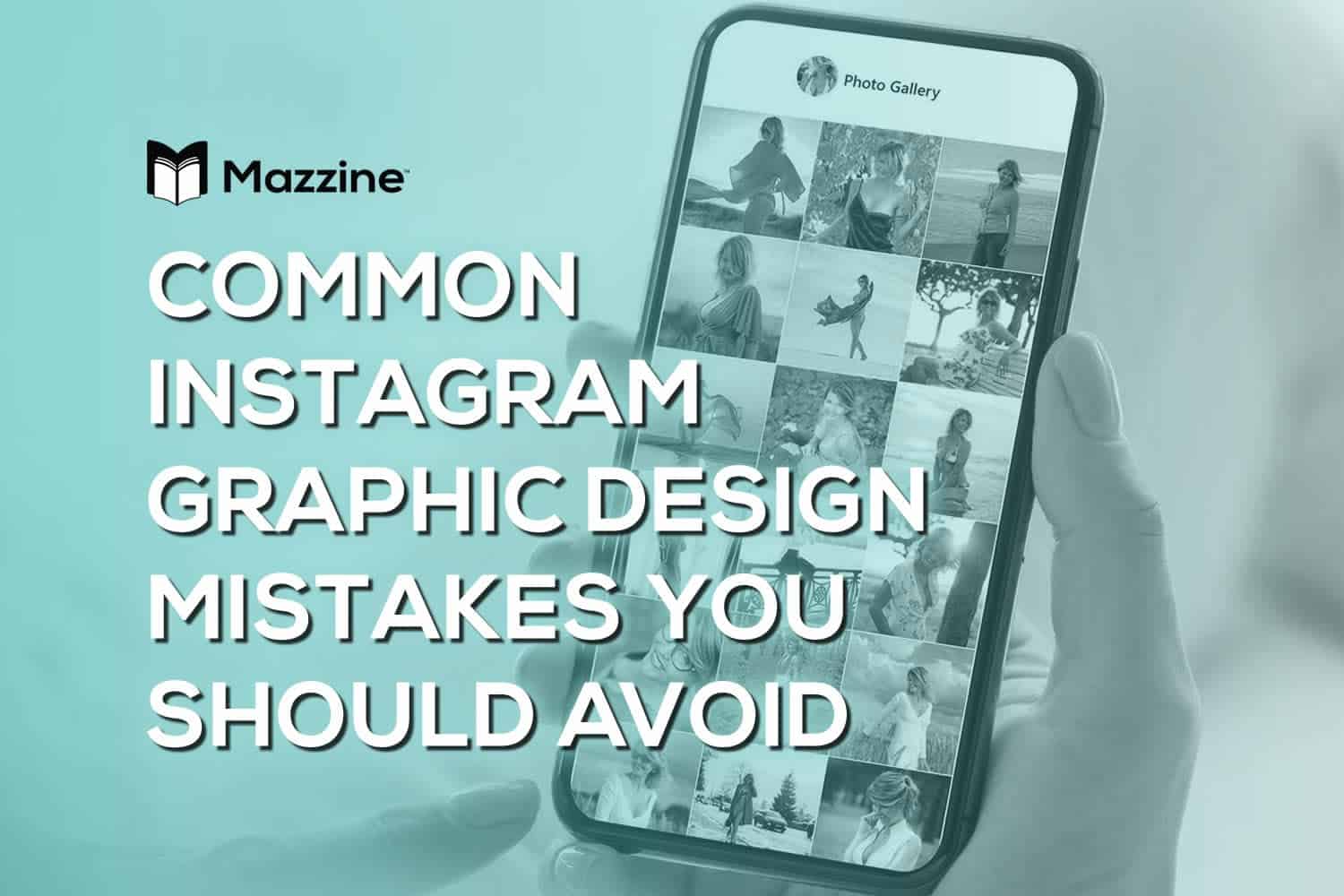In this article we are going to share some Common Instagram Graphic Design Mistakes You Should Avoid.
As everyone knows, the entire purpose of design on an Instagram post is to cut through the clutter of millions of other users’ posts and make itself instantly noticeable, easily recognizable, and create an appeal that will compel users to stop and click on it to know more.
Essentially, it either catches your crowd’s consideration or it neglects to hold it longer than a short lived glimpse.
As an advertiser, be that as it may, you’ll run over a few occasions when you have to make plans. It’s here you should be aware of making structures that are clear, mess-free, and appealing.
To assist you with improving your 2020 visual computerization methodology, we connected with proficient architects to assemble a rundown of terrible structure botches you have to evade this year.
To make top notch items, the entirety of the little subtleties is essentially significant. Each detail must be considered. It tends to be anything but difficult to lose all sense of direction in the subtleties and dismiss the 10,000 foot view.
That is the reason there are a few extraordinarily basic (UI) structure slip-ups and shortcomings.
The design element takes priority over everything else simply because people’s brains process it faster than anything else. Brands know that usually the most difficult challenge in marketing is to get noticed.
This is the reason why all of them, without fail, invest a lot of time, effort, and money to create a graphic design identity that ensures easy noticeability and top-of-the-mind recall.
A quick look at some of the most commonly made graphic design mistakes that inexperienced designers tend to make on Instagram:
Table of Contents
Not Ensuring a Clear Visual Hierarchy
The first thing to remember when creating graphic designs for Instagram is that you need to establish a clear visual hierarchy for users so that they will encounter and interpret the graphic elements in the order necessary for the brand to make the maximum impact with its message.
A typical Instagram post can contain many elements, both image and text, that need to be understood by the user in the right order so that the message is clearly and unambiguously received and acted on.
Failing to lay down a visual hierarchy will usually lead to confusion regarding the intent of the post and will result in less than optimal conversions.
Selecting Appropriate Images
You’ll additionally need to examine picture constraints. On the off chance that your customer doesn’t have any custom photographs or they are not prepared to purchase them, there’s no sense in utilizing excellent however trivial photographs from places like Unsplash, Pexels, and Pixabay.
Why? Photographs will in general be theoretical. It’s insufficient to utilize something lovely. Rather, you have to choose pictures that make an account or suggest a more profound importance.
Whatever you do, don’t utilize photographs that shouldn’t be there. Nowadays, individuals become overpowered by tremendous measures of data. One additional piece of pointless visual data will just disturb them.
Using Conflicting and Confusing Visuals
Instagram is a visually-oriented social media network where colors, images, illustrations, logos, etc. are the most important assets. However, these elements must be effectively used to reinforce the impact of the message.
If the selection of the colour palette or the images is done without paying thought to what is being attempted to be conveyed, the result can be confusion.
For example, if the brand wishes to publish a post regarding how it can empower users but uses a dark and foreboding colour scheme or images that induce sadness or depression, the entire purpose of publishing the post will be lost and followers will be confused regarding the product characteristics and brand positioning.
Frustrating Error Status
At the point when you’re structuring a UI, remember the primary reason for any UI: to give as smooth as conceivable a communication between the client and the administration. Interfaces are a bad situation for questions, inquiries without answers, or any sort of vulnerability.
Planners ought to give clear input to clients about states, particularly on account of blunder states. In like manner, mistake notices ought to fulfill the accompanying basic principles:
- They ought to be unmistakable and perceptible (e.g., the shading red is a typical UI design showing a mistake).
- They ought to plainly clarify what has occurred and how clients can fix the blunder.
- They ought to be relevant. It’s smarter to show blunder messages close to the component they identify with.
- They ought not be irritative. Isn’t your client previously bothered enough by the mistake?
Creators ought to likewise deal with startling mistakes (for example server blunders, page not found). Any blunder message is a deterrent to the client’s stream.
That is the reason why we have to enable the client to deal with it, give any potential arrangements, and attempt to streamline a terrible encounter — particularly if it’s not the client’s misstep. For instance, a decent arrangement might be to structure representations or liveliness for 404 and 500 pages.
Using Too Many Typefaces and Fonts
When there is a choice of hundreds of typefaces, newbie graphic designers often make the mistake of using far too many than what is necessary just to show off.
The result can be a confusing mess that the human brain finds very difficult to process.
Generally, you should not think of using more than three typefaces as otherwise, you will end up producing visual clutter that can be detrimental to conversions.
It is also necessary to use fonts that do not clash with each other and properly reflect the tone of the message. According to https://edition.cnn.com, serif fonts are seen as conservative while sans-serif fonts are perceived to be liberal.
Having a lack of Whitespace
The absence of whitespace is another structural blemish to maintain a strategic distance from in
Over-burdening your structure or attempting to occupy each space is a typical slip-up for non-creators or customers.
Andrew from The Logo Create said it well in this tweet below:
In any case, including blank areas can spare structures, making them justifiable, outwardly engaging, and mess-free.
Basically, whitespace, otherwise called negative space, is the unmistakable space in the structure. It doesn’t mean void space with a white foundation. Rather, the void area is all the plain space of any shading, foundation picture, example, and surface.
In addition to the fact that it makes your structure exquisite, it likewise puts an accentuation on certain plan components, for example, your source of inspiration, which makes your message stick out. Research additionally affirms void areas can expand appreciation by up to 20%.
Not Using the Right Amount of Contrast
It is quite common to find designers using colours without paying attention to the readability. It is very important the colour of the background does not interfere with the colour of the text and makes it difficult to read as this will prompt the user to just skip the post and move on to something else, resulting in a lost marketing opportunity.
If you are using solid deep colour in the background, make sure that the colour of the text is light enough to provide the right contrast for easy reading.
Another issue with using deep and dark backgrounds is that many fonts, especially with serifs, can appear to be jumbled when the post is seen on a small mobile phone screen. It is important to conduct readability tests on a large variety of screens under different lighting conditions before arriving at the final results that you can use to post on Instagram.
Excessive Use of Copy
Marketers tend to be very enthusiastic and generally have a lot to say about the performance and attributes of their brands. However, the typical reaction of most users is to skip the post when they encounter too much copy.
Marketers need to learn the art of using the least number of words to make the heaviest impact. Remember, the use of graphics is to attract attention and ensure memorability, and the use of copy is to convince users that the product is worth purchasing.
Too Much Design
Because you can add something to your structure doesn’t mean you should. Effortlessness offers a lot of advantages. So be cautious about going insane with styles.
While over-structuring is definitely not a significant mix-up, it can cause some difficult issues.
For instance, utilizing an excessive number of hues on a page is confounding; it becomes muddled which bits are increasingly significant. A couple of hues are sufficient to give visual unmistakable quality to what’s extremely significant.
We can say the equivalent regarding text styles. It’s sufficient to underscore features and subheads, and the use to differentiate for key expressions.
The more “stuff” you pack into your structure, the harder a client needs to think, to remove the data it presents. A plan needs to inhale and live all alone. So recollect: Having a clear space isn’t really terrible. As a rule, it’s superior to filling each square inch of clear space.
Conclusion
The purpose of graphic design for Instagram is to get the attention of the target audience and impress them sufficiently with the aim of getting them within your sales funnel and ultimately make a conversion.
It is very important to be clear about your objectives and use all the design elements in such a way that the impact of the message is not diluted.
Write For Mazzine™
We hope these Common Instagram Graphic Design Mistakes You Should Avoid have been helpful.
Interested in writing for Mazzine™? We would love to hear from you! – Join our community of writers from around the world. – Check out the guidelines on the Write for us. page.


